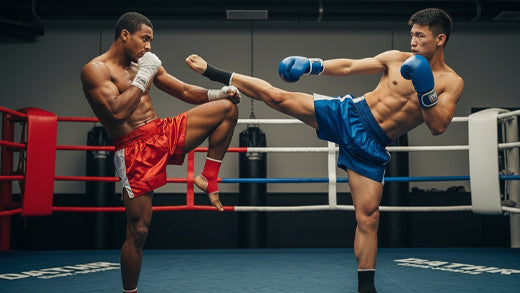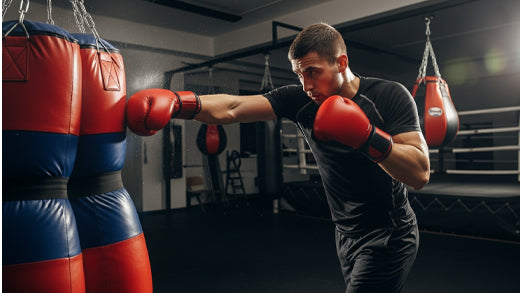The Brazilian Jiu-Jitsu (BJJ) belt system represents a comprehensive journey of skill acquisition and dedication. Each colour represents a stage in this journey of mastering both physical and mental strength simultaneously. It is a powerful visual metric that motivates practitioners, providing clear, structured goals as they progress from novice to expert.
These ranks, ranging from the foundational White Belt to the esteemed Black Belt, require both technical proficiency and a steadfast commitment to ongoing learning and development. At any stage in their journey, understanding BJJ belt levels helps a grappler determine their current standing and the next steps they should take to advance their skills.
BJJ belt levels System:
The BJJ belt system is a structured and standardized method for recognizing practitioners of Brazilian Jiu-Jitsu for their dedication and commitment to the art. The International Brazilian Jiu-Jitsu Federation (IBJJF) has established guidelines to ensure fairness and consistency throughout this system.
BJJ offers five primary belt ranks. These are:
-
White
-
Blue
-
Purple
-
Brown
-
Black
Below is the complete breakdown of the five BJJ belt levels, along with their approximate timeframes and core focuses.
1. White Belt: The Start Line
Brazilian Jiu-Jitsu's white belt marks the beginning of your journey into this art form, serving as a starting point for learning core escapes, holds, and positions that form its fundamental concepts. There are no age restrictions at this belt level, and progression to higher ranks serves as the basis for all other belt levels in BJJ.
Key Details:
White belt training primarily emphasizes building core survival instincts and learning the fundamental mechanics of grappling. At this stage, students focus on understanding how to move efficiently and safely on the mat, emphasizing control, timing, and defence rather than winning. Short meditation techniques may help improve focus while decreasing frustration associated with early learning struggles.
-
The white belt aims to teach essential defensive skills, such as posture, base, and escapes.
-
Aims to become acquainted with major positions, including guard, mount, side control, and back control
-
Develop discipline, consistency, and comfort in uncomfortable positions.
-
Build awareness of balance and leverage as foundational principles of all techniques.
Training Metrics
|
Question |
Answer |
|
How Long Will I Train? |
1–2 years |
|
What Do I Focus On? |
Basic escape moves, holding positions, and advancing positions |
|
What's My Next Step? |
Accumulate four stripes before advancing to the blue belt. |
2. Blue Belt: Building Your Base
The Blue Belt is a significant milestone in the BJJ belt system. Reaching this rank means that you have gained a strong defensive foundation and can now defend yourself against untrained opponents, marking an essential transition within BJJ's belt levels.
Key Details:
Students aged 16 or older can earn a blue belt. For any successful transition to purple belt status, at least 1.5 to 2 years of continuous training is required, and skill must be consistent across training sessions; it aims to:
-
Successfully execute a wide variety of fundamental techniques.
-
Develop a solid defensive game (the ability to withstand higher-level Jiu-Jitsu belts).
-
Understand basic strategies and pacing during sparring.
-
Begin to refine their "A-game", or preferred set of techniques.
Training Metrics
|
Question |
Answer |
|
How Long Will I Train? |
1.5 to 3 years |
|
What Do I Focus On? |
Defensive consistency, survival, and a broad technique base |
|
What's My Next Step? |
Minimum 2 years as a blue belt before advancing to purple |
3. Purple Belt: The Technician
Purple belt is considered the rank at which practitioners truly become technicians in Jiu-Jitsu. They now have in-depth knowledge of positions, submissions, and transitions. Purple belts can now begin teaching lower-ranked students as they demonstrate an advanced grasp of this art. Sparring gloves are highly recommended for any cross-training at this level.
Key Details:
The minimum age requirement for this belt is 16 years, and progress from purple belt to brown belt requires at least 1.5 years. Practitioners at this level understand not just accumulating moves, but also the relationship between moves and how to apply subtle pressure and timing techniques.
-
Demonstrate advanced knowledge and an impressive "A-game."
-
Counter the attacks of other high-level practitioners.
-
Utilize advanced setups, grips, and tactics.
-
Be capable of teaching both fundamental and intermediate techniques effectively.
Training Metrics
|
Question |
Answer |
|
How Long Will I Train? |
1.5-3 years |
|
What Do I Focus On? |
Technique specialization, sophisticated strategy, and instruction |
|
What's My Next Step? |
Minimum 1.5 years as a purple belt before advancing to brown |
4. Brown Belt: The Final Polish
The last rank before gaining the black belt is the brown belt. This level provides a very high level of technical skills and practical applications. Brown belts are regarded as mature competitors and respected instructors. They possess a developed game strategy and excellent BJJ conditioning.
Key Details:
The minimum age required is 18 years, and the minimum time to advance from brown belt to black belt is one year. This stage refines the entire game, eliminating any areas of weakness.
-
Ability to handle all elementary and sophisticated techniques.
-
Intensive knowledge of BJJ philosophy and history.
-
A capacity to apply varied game strategies regularly against challenging opponents of all skill levels, often supported by intensive Punching Bag Workout sessions.
-
Demonstrating the leadership quality of a future master.
Training Metrics
|
Question |
Answer |
|
How Long Will I Train? |
1-2 years |
|
What Do I Focus On? |
Game refinement, flawless execution, and leadership |
|
What's My Next Step? |
Minimum 1 year as a brown belt before advancing to black |
5. Black Belt: Mastery & Lifetime Learning
The black belt is a universally recognized symbol of expertise within BJJ belt ranks. Reaching this level often takes 8-12 years of dedicated training, but that does not mark an end, only a new beginning. Black belts continue training, evolving and teaching while earning new degrees (dans).
Key Details:
The minimum age requirement is 19 years old. The minimum time required for a Black Belt to advance to the next degree (or stripe) is typically 3 years for the first three degrees, and then 5 years for degrees four through six. Progression continues for a lifetime.
-
Mastery of all fundamental and advanced techniques, and the ability to innovate new ones.
-
Deep understanding of the philosophy, history, and application of BJJ in all contexts (self-defence, sport, etc.).
-
Ability to effectively manage and lead a school or training program.
-
Continuous demonstration of technical excellence, teaching aptitude, ethical conduct, and the wise use of strength training equipment for workouts to maintain peak physical condition.
Training Metrics
|
Question |
Answer |
|
Total Time to Achieve? |
8–12 years (Total from white to black) |
|
What Do I Focus On? |
Instruction, evolution, and maintenance of mastery |
|
What's My Next Step? |
Advancement through 'degrees' or 'dans' (stripes on the black belt) |
Advanced Ranks: The Coral and Red Belts
Beyond these five BJJ belt levels are the Grandmaster ranks, which are based on sustained time, teaching, and legendary contributions towards BJJ.
-
Red and Black Belt (Coral Belt, 7th Degree): This is awarded after at least 31 years of holding a Black Belt.
-
Red and White Belt (Coral Belt, 8th Degree): This belt is awarded to an individual who has held the 7th Degree for another seven years.
-
Red Belt (Grandmaster, 9th to 10th Degree): This is the most prestigious honour; the 9th degree is earned after almost 50 years of active Black Belt training. The 10th Degree is only granted to the founders of Brazilian Jiu-Jitsu (the Gracie brothers).
Conclusion
The BJJ belt levels represent more than technique; they represent progress, patience, focus, and mastery. Every level presents a different challenge while pushing you towards discipline and humility.
Sting Sports is here to guide you through your entire Jiu-Jitsu journey and provide high-quality gear, such as boxing gloves and punching bags, so that you can train safely and consistently at all your different belt levels in BJJ.
FAQs
1. What is the average time required to move through the entire BJJ belt levels?
The duration of reaching black belt status is usually 10-12 years, depending on the rate of training and commitment. It takes 40 years or more to achieve the red belt.
2. Which belt in BJJ is the most difficult one to get?
The blue belt is considered the most challenging to get; this is the belt where many students drop out. It is a test of your dedication to the art and consistency in training.
3. What is the meaning of the stripes on BJJ belts?
Each colored belt (up to brown) has stripes to recognize the progress between belt levels. To be eligible for the next rank in the BJJ belt levels, a student typically requires four stripes.




